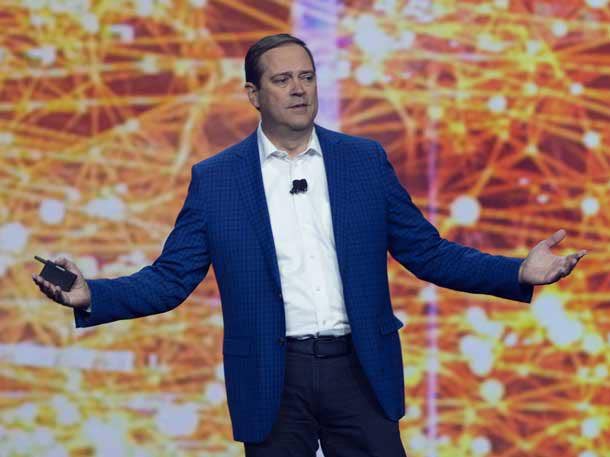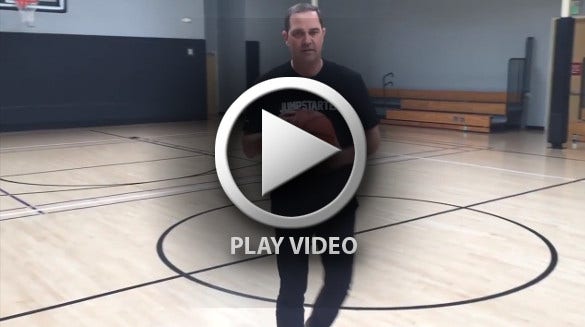Cisco CEO: ‘People Didn't Think We Could Do' Network Subscriptions

Cisco CEO Chuck Robbins told CRN the company has proven its doubters wrong on its ability to deliver subscription-based networking.
In fact, the company's networking subscription model is one of the big reasons Cisco is now bringing in 65 percent of its software revenue from subscriptions, Robbins said.
"In 2017, it was the first time we launched a subscription on a networking product—on an Ethernet switch, which people didn't believe we could do," said Robbins. "Not only was it widely successful, the product that it was launched on, the Catalyst 9000, became the fastest-ramping product in the history of the company, so I think that we've now proven that the model works, and we are in the midst of continuing to add more pure software assets to our business and also continuing to shift our core business to one of recurring software and subscriptions."
[Related: Cisco CEO Chuck Robbins On The 'Proven' Subscription Model And 'Huge' 5G Opportunity]
Robbins says the company is "on track" to meet its pledge to have software and services account for 30 percent of its revenue over the next three years.
Additional CRNtv Coverage: Behind The Scenes With Cisco's Chuck Robbins And Team
"Our software business has been growing significantly," Robbins said. "We are way on track for the targets we set on our last analyst conference. … We have made tremendous progress."
[Related: Cisco Capital Is Clearing Hurdles For Partners Transitioning To A Recurring Revenue Model ]
The majority of Cisco's revenue still comes from its switching and router hardware products, which accounted for 57 percent of its overall revenue in the most recent quarter, but the IT giant's software-based revenues are growing, said Kelly Kramer, Cisco's executive vice president and CFO, during the company's Q2 2019 earnings call in February. Cisco at the time revealed that 65 percent of its software revenue now comes from subscriptions, which is up 10 percent compared with the year-ago quarter.
The San Jose, Calif.-based company is still largely viewed as a hardware company, even though 80 percent of its engineers are software engineers, Robbins said. Overcoming this perception has been one of Cisco's biggest challenges. "It [required] a shift in how we talk about what we do and how we work with our customers," he said.
"Partners are moving with Cisco," said Robbins. Much like any transition, some solution providers are ahead of the curve—and ahead of Cisco—while others are following along at the same pace, he said.
Still, there are some partners who are continuing to operate in the business model that has kept them comfortable for years; selling hardware and earning large, one-time commissions, he said.
Long View Systems, a Cisco Gold partner offering managed IT and cloud services, is well-versed in recurring revenue and is glad Cisco is shifting its own model away from transactional revenue, said Kent MacDonald, senior vice president of strategic alliances for Long View Systems.
"From our lens, we've been very much focused on recurring revenue and building recurring offers because our customers are not looking to purchase hardware; they want to subscribe to a business outcome," MacDonald said, referring to the recurring revenue software transformation at Calgary, Alberta-based Long View, which specializes in managed security and multi-tenant cloud services, as well as network management. "I want Cisco to continue to put its foot on the accelerator and make that transition."
The difference between a technology transition and a business model transition, the latter of which Cisco is tasking its partners with today, is that vendors must consider profitability for its partners and what that change could mean for their businesses, Robbins said. Cisco and its partners, he added, are learning together. "It’s a little more complicated and it requires us to continue to adapt and change as we continue to work through it with [partners]. But I think so far, we have been very pleased."
Ken Farber, president of software for ePlus, No. 34 on the CRN Solution Provider 500, said that business model transformation is more difficult than a technology transition.
"The method by which [partners] sell to customers and interact with them is much different. Selling software and focusing on the life cycle requires some new conversations with the customer that historically may not have been required," Farber explained.
ePlus, a Cisco Gold Certified Partner with Cisco Master Specializations in Security, Collaboration, Cloud Builder, and Cloud and Managed Services, is "leaning in" on a software strategy as it builds out the future of its business, just like Cisco, Farber said.
Cisco's focus on software and services is helping ePlus not only gain new customers, but go deeper with its existing client base, he said. It's also making the renewal process a "nonevent."
"When you start selling software in a multi-year fashion, you don't want to sell services only when it's time to do the renewal," he said. "The solutions we are selling today are taking a different course in terms of how we interact with customers to make them successful."
Recurring revenue is the "holy grail" for the channel, and many Cisco partners are starting to embrace the new business model. In fact, the bulk of Cisco's partners want to move into software and services and are asking Cisco for help, said Maria Martinez, Cisco's executive vice president and chief customer experience officer.
"We are working very hard to drive the bulk of the ecosystem in this direction and I think that will actually wake everyone else up," she said, referring to partners who are still focused primarily on selling hardware and earning one-time commissions.
Cisco in November completed a round of layoffs within its Customer Experience business that included 200 to 300 employees, which Robbins said was necessary as the company transforms into a software- and subscription sales-led organization. To accelerate his strategy to focus the company on software, services, and recurring revenue, Robbins brought on Martinez last year to lead the company's Customer Experience organization, which Cisco views at critical to its transformation and overall growth strategy with partners and customers.
Partners, Martinez said, are key if Cisco is to be successful on its path to software and services. "They touch customers more than we do, so we can't do this without them … I'm very proud and impressed by how much we have been able to achieve moving in this direction," she said.
As partners help Cisco build its recurring revenue, which results in a more predicable balance sheet for the company, Cisco is also helping partners strengthen their own annuity streams, said Nirav Sheth, vice president of Cisco's Global Partner Organization.
Customers increasingly want to consume IT on a subscription basis that will also allow them to gain incremental value on their investments. Many customers are interested in Cisco's traditional hardware-based networking offerings, such as its routers, are also interested in solutions like SD-WAN, said Sheth.
To incent partners to also sell services, Cisco's SD-WAN software subscription is a recurring revenue opportunity that rewards partners when they deliver the deal, when they expand the footprint within the customer account, and when they get the renewal, Sheth explained.
"Compared to just a one-time reward, we are rewarding [partners] throughout the lifecycle of that software subscription," he said. "Similarly, when partners layer on any cloud security solutions, we reward partners when they drive adoption, expand, and ultimately, renew."
Sheth said Cisco is making the recurring revenue software transformation hand in hand with partners. "Cisco's commitment is that we are all-in on software – this is the way of the future for us, and partners see that."
